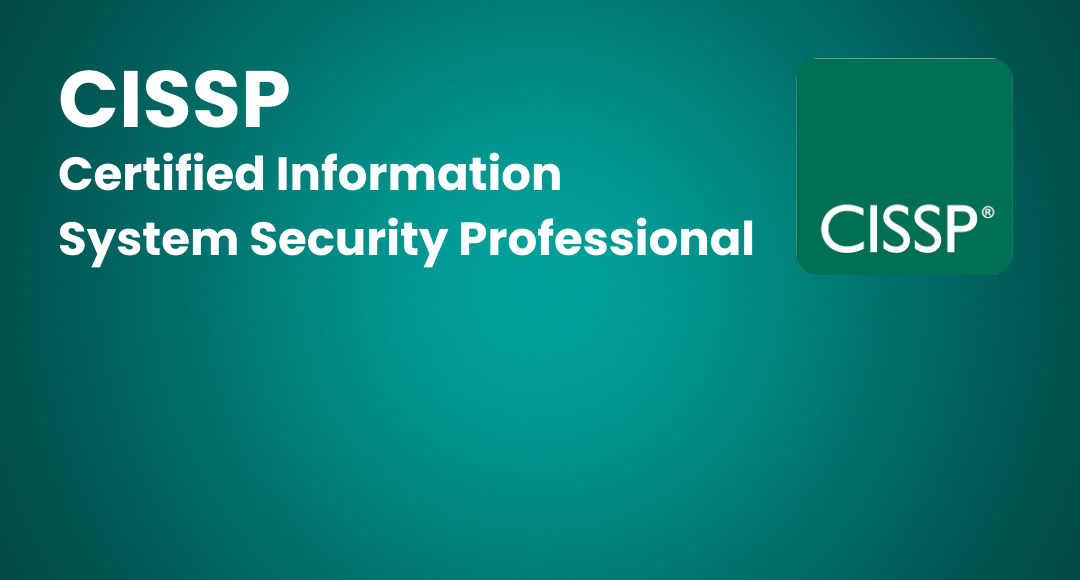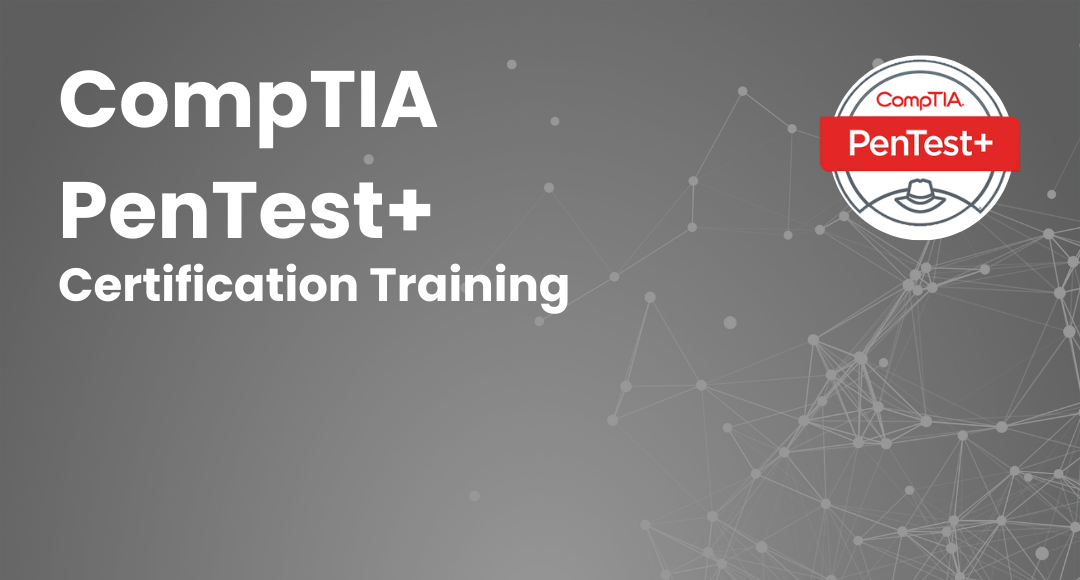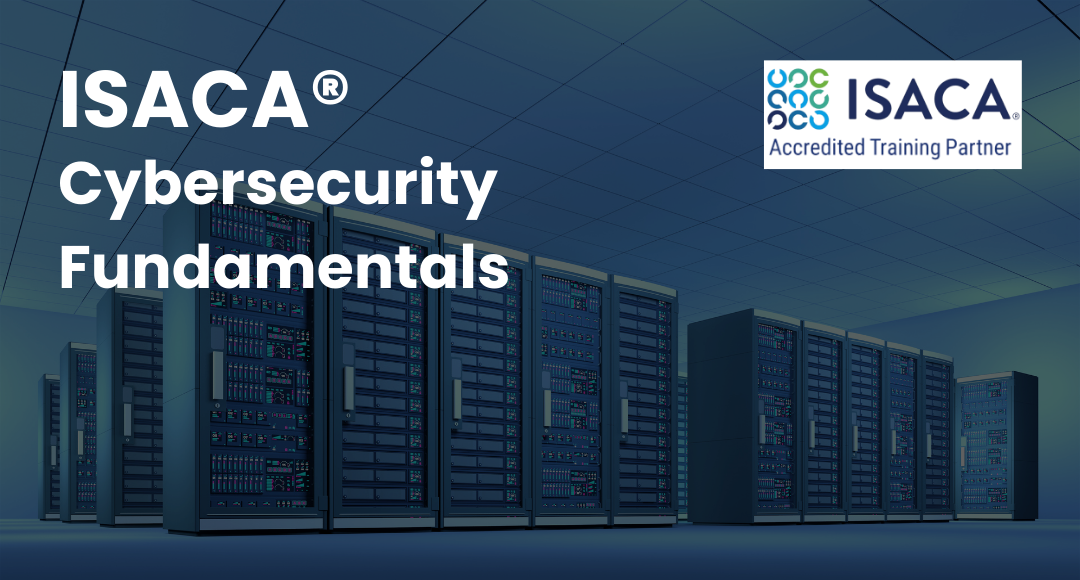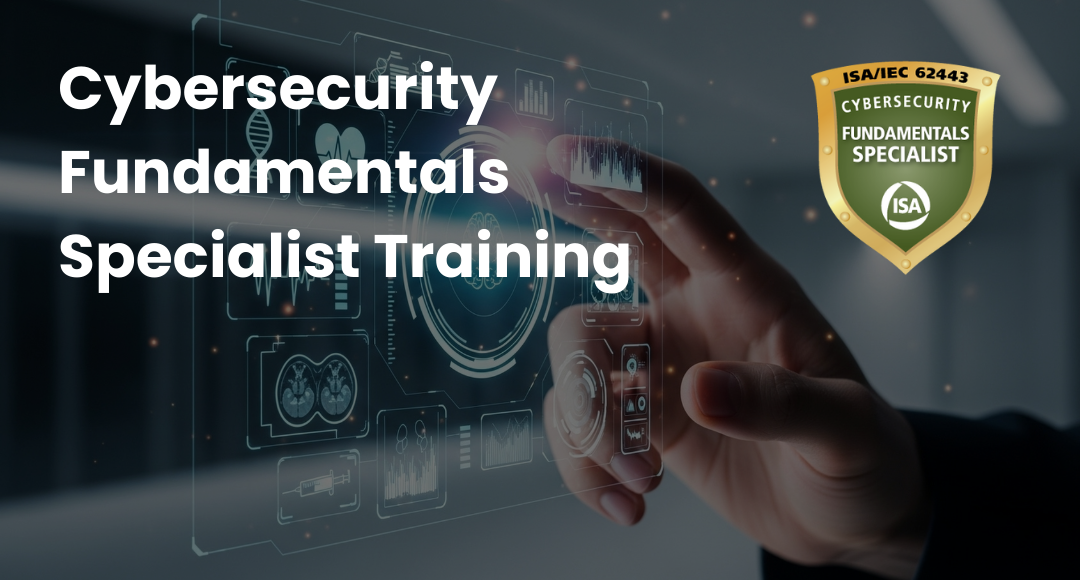Why and How to Perform a Risk-Based Internal Audit
-
 By Sushmith
By Sushmith - Published on Jan 9 2024

Table of Contents
- Risk-Based Internal Audits - Overview
- Why Risk-Based Internal Auditing Matters
- Developing a Sturdy Risk-Based Audit Methodology
- Steps for a Seamless Internal Audit Implementation
- Advanced Strategies and Tips for Effective Risk Management
- Sprintzeal's Tailored Training for Risk-Based Internal Audits
- FAQs
- Summary
Risk-Based Internal Audits - Overview
Risk-based internal audit planning is revolutionary in today's hectic business environment. This is how risk-based internal auditing works. These help eliminate monotonous filing cabinets and lengthy checklists. Now, let’s get a thorough understanding of a risk-based internal audit.
Think about an effective early warning system. Instead of blindly auditing every department and process, risk-based audits zero in on the areas that matter most. Traditional internal audits often operate like a safety net, catching what falls through the cracks. Risk-based auditing flips the script.
It proactively hunts down potential dangers before they have a chance to inflict damage offering Proactive Benefits.

Why Risk-Based Internal Auditing Matters
Your internal audit Plan becomes value-centric rather than a cost center when you adopt a risk-based approach to internal auditing. You can proactively identify and navigate potential dangers, ensuring a smooth and successful flight towards your goals.
Here's why embracing this game-changing approach matters more than ever:
1. Adapting to a Changing Environment:
The business world is no longer a safe haven. The environment is dynamic and ever-changing, full of lurking dangers such as:
- Cybersecurity lapses: Data breaches are becoming more common, and even the most protected systems can have weaknesses.
- Economic fluctuations: Unpreparedness might swiftly cause earnings to change into losses due to market volatility.
- Operational inefficiencies: These inefficiencies can stealthily deplete your resources and impede your company's expansion.
- Modifications to regulations: The operational environment might be drastically changed by a new legislation or policy.
2. Improved Profitability and Growth:
Risk mitigation protects income sources, maximizes operational effectiveness, and develops a risk-aware culture, all of which aid in for a long time sustainable profitability and growth. Risk-based auditing promotes organizational performance, compared to traditional audits' reactive approach.
3. Enhanced Operational Effectiveness:
External auditors don't carry out risk-based auditing alone. By encouraging teamwork and involvement and giving workers the tools to recognize and handle possible hazards in their jobs, it builds an organization that is proactive and resilient. Operations are streamlined, productivity is increased, and resource waste is reduced when latent inefficiencies within your processes are discovered and addressed.
4. Enhanced Resilience:
Your company will be more resilient to unanticipated events if it practices proactive risk management, which equips it to adjust to and overcome such obstacles. This dynamic is recognized by risk-based auditing, which proactively adjusts to new risks before they become harmful obstacles, such as cybersecurity breaches, economic swings, and regulatory changes.
5. More Peace of Mind and Confidence:
You can concentrate on strategic projects and move your company forward with unwavering confidence when you know that your vulnerabilities have been found and fixed. By giving top priority to the high-impact threats that could thwart an organization's progress, risk-based auditing makes sure resources are allocated to addressing the biggest risks.
Think of it this way:
- Traditional audits: Like a doctor who diagnoses a disease after you're already sick.
- Risk-based audits: Like a personal trainer who helps you build strength and prevent injuries before they happen.
Let’s now dove into the discussion of How to Perform a Risk-Based Internal Audit.
Developing a Sturdy Risk-Based Audit Methodology
Think of your company as a magnificent castle, with sturdy walls that withstand the elements and a foundation built on firm ground. To effectively withstand unforeseen attacks, even the most resilient castle needs to be built with care and maintained proactively.
Making the switch to an internal auditing approach that is based on risk is a significant step in safeguarding the future of your company. But to turn this goal into a strong and useful framework, careful preparation and implementation are needed.
So, how do we build and implement this strategic approach? Here are the key components to navigate a roadmap:

1. Laying the Foundation: Identifying the Landscape of Risk
As with all journeys, risk-based auditing commences with a thorough mapping of your particular business landscape. This incorporates:
- Specifying your goals for strategy: What are your hopes and long-term objectives?
- Evaluating the environment within: What are the resources, procedures, processes, and weaknesses that you have?
- Analyzing outside influences: What market circumstances, industry trends, and legislative changes might have an effect on you?
- Locating possible dangers: Determine the threats that could prevent you from moving forward, such as operational inefficiencies or cyberattacks.
2. Prioritizing the Towers of Defense: Risk Assessment and Ranking
Threats are not all the same. Prioritize the risks that are most important to you and concentrate your resources and efforts on those that are most dangerous. This incorporates:
- Calculating the chance that each risk will materialize: How likely is it that this threat will become a reality?
- Evaluating each risk's possible impact: To what extent may it harm your company?
- Sorting the risks according to likelihood and severity: Prioritize addressing the threats with the greatest potential for harm.
3. Constructing the Walls of Protection: Designing and Implementing Controls
Once you've identified and prioritized your enemies, it's time to build your defenses. This involves:
- Designing tailored controls for each risk: Think of these as security measures, like firewalls, alarms, and access controls that mitigate the potential damage.
- Implementing the controls effectively: Ensure your chosen controls are properly understood and followed throughout the organization.
- Monitoring and testing your defenses: Regularly assess the effectiveness of your controls and adapt them as needed.
4. Maintaining the Watchtowers: Continuous Monitoring and Improvement
The risk landscape is ever-changing, and your defenses need to adapt. Therefore:
- Continuously monitor your risk profile: Stay informed about new threats and emerging trends that could impact your business.
- Regularly update your risk assessment and ranking: Ensure your priorities reflect the evolving landscape.
- Refine and adapt your controls: Don't be afraid to adjust your defenses to address new challenges.
By following this roadmap, you can build a robust risk-based audit approach that serves as a strategic shield for your business.
Steps for a Seamless Internal Audit Implementation
Developing a strong risk-based audit methodology is one thing; putting it into practice seamlessly for internal audits is an entirely different matter. The following are the crucial steps that guarantee a seamless and effective switch from planning to execution:

1. Secure Commitment and Buy-in:
- Engage key stakeholders: Involve management, staff, and the owners of internal controls from the beginning. Address any concerns they might have and outline the advantages of the new strategy.
- Comply with company objectives: Connect your audit plan to the organization's overarching strategic goals. This ensures continued commitment and highlights the benefits of risk-based auditing.
- Effectively communicate: Inform everyone on the audit's progress and conclusions. Collaboration and trust are fostered by transparency.
2. Assemble Your Dream Team:
- Build a diverse team: Choose auditors with the right skills and experience to address the specific risks you've identified. Consider including individuals from different departments for a holistic perspective.
- Invest in training: Make sure the members of your team understand best practices and risk-based auditing methodologies. It is essential to keep learning new things in order to adjust to changing risks and laws.
- Define roles and responsibilities clearly: To prevent misunderstandings and promote effective teamwork, clearly define each member's role and responsibilities within the audit team.
3. Foster Open and Collaborative Communication:
- Provide unambiguous channels of communication: Assign specific venues for information sharing among auditors, stakeholders, and control owners.
- Promote comments and ideas: Throughout the audit process, we encourage helpful feedback and suggestions for enhancement. Better results are produced as a result of fostering a sense of ownership.
- Encourage openness and transparency: Be forthright about the audit's conclusions and suggestions. This increases confidence and makes it easier to carry out corrective action on time.
4. Leverage Technology for Efficiency and Accuracy:
- Make use of audit management software: These programs enhance data analysis, expedite the audit procedure, and make reporting and documentation easier.
- Consider data analytics: Make use of insights based on data to determine new risks, evaluate the effectiveness of controls, and order audit tasks.
- Take automation Into Consideration: Look for ways to automate time-consuming jobs so that auditors can concentrate on more intricate analyses and risk-reduction plans.
5. Continuous Monitoring and Improvement:
- Establish a review and feedback loop: Regularly assess the effectiveness of your internal audit program and make adjustments as needed.
- Adapt to evolving risks: Stay updated on industry trends and emerging threats, and adapt your audit plan accordingly to ensure it remains relevant and effective.
- Celebrate successes and learn from failures: Recognize and reward achievements, and analyze any shortcomings to identify areas for improvement.
By following these steps, you can transform your internal audit implementation into a seamless, collaborative, and value-generating process that effectively protects your organization from potential threats and paves the way for sustainable success.
Advanced Strategies and Tips for Effective Risk Management
Once you've mastered the fundamentals of risk-based internal auditing and implemented a seamless audit program, it's time to elevate your game. This section delves into advanced strategies and tips to solidify your organization's defenses and propel it towards even greater resilience and growth.
Embrace Scenario Planning:
- Go beyond the "what-ifs"
- Stress test your defenses
- Foster a culture of preparedness
Leverage Predictive Analytics:
- Transform data into actionable insights
- Predict potential disruptions
- Proactively allocate resources
Embrace External Partnerships:
- Collaborate with industry experts
- Benchmark against industry leaders
- Stay updated on emerging threats
Foster a Culture of Continuous Improvement:
- Celebrate successes and learn from failures
- Embrace a growth mindset
- Invest in employee training
Consider Emerging Technologies:
- Explore blockchain for secure data management
- Utilize artificial intelligence for threat detection
- Embrace the cloud for agility and scalability
Sprintzeal's Tailored Training for Risk-Based Internal Audits
Building a robust risk-based audit approach requires more than just knowledge and tools. Expertise, confidence, and a tailored roadmap are very crucial for managing your organization's unique risks. This is where Sprintzeal comes in. We are not just any professional trainer.
Sprintzeal provides tailored and curated training solutions that equip you with the skills and strategies to transform your internal audit approach and spearhead your organization towards sustainable success. Here’s why Sprintzeal should be your first choice for your professional advancement:
- Experienced professionals with extensive experience in risk management
- Curated and tailored training specific to your needs
- Interactive and hands-on exercises
Ready to Take the Next Step?
Sprintzeal offers a variety of training programs to cater to different needs and experience levels. Following are some courses suggested to you:
CISA® - Certified Information System Auditor
ISO 27001 Lead Auditor
Make an investment in your professional development with Sprintzeal!
FAQs
Why use a risk-based approach?
Traditional audits often get bogged down in minutiae, neglecting the real threats. Risk-based auditing prioritizes the high-impact dangers to your success, focusing resources on what truly matters. It's like using a metal detector to pinpoint the real dangers instead of blindly wandering through a minefield.
How do you do a risk-based audit?
It involves mapping your risk universe, prioritizing high-impact threats, tailoring controls, and fostering a culture of vigilance. This includes identifying key business objectives, analyzing critical processes, conducting risk assessments, and designing effective controls.
What are the steps of a risk-based approach?
- Mapping the Risk Universe
- Prioritizing High-Impact Threats
- Tailoring Controls and Procedures
- Fostering Vigilance
What are the benefits of audit risk assessment?
Audit risk assessments improve efficiency by directing resources towards the most pressing issues. They uncover hidden dangers, enhance decision-making, and ultimately support achieving organizational goals with greater assurance.
What is the purpose of a risk assessment in internal audit?
Internal audit risk assessments help you understand the potential threats to your organization's objectives. They identify vulnerabilities in processes and controls, allowing you to mitigate risks and ensure efficient operations. By proactively addressing potential issues, you can protect your organization from disruption and loss.
Summary
This blog has discussed the specifics of risk-based internal auditing, which is an effective tool that makes your company impenetrable against unforeseen challenges. In summary, a strong toolkit is necessary to successfully negotiate the winding paths of contemporary business. This includes a map based on a thorough understanding of your particular risk landscape, a torch that highlights high-impact threats, and the resilience of a fortress built through focused controls and ongoing vigilance.
You can become a proactive architect by adopting a risk-based internal audit approach. This shapes your future with practical actions and confidence. We've also covered advanced techniques, dug into the principles, and emphasized the value of lifelong learning and adaptation in our other blogs.
Suggested Reads:
Risk-Based Internal Auditing Approaches: 7 Steps To Explore
Risk-Based Audit Planning Guide For Beginners
Understanding Risk Assessment In Audit Planning
At Sprintzeal, we don't just offer tools, we offer empowerment. Our tailored training programs equip you with the knowledge, skills, and expertise to master risk-based internal auditing, not just implement it. Invest in your knowledge, invest in Sprintzeal, and unlock your full potential.
We recommend you to consider these options:
CISA® - Certified Information System Auditor
Cybersecurity Risk Assessment Specialist
These certifications equip you with industry-recognized credentials and open doors to exciting career opportunities.
Don't miss out! Subscribe to our newsletter now and never miss an update on the latest trends with Sprintzeal's insights & exclusive offers.
Subscribe to our Newsletters
Popular Programs
CISSP® - Certified Information System Security Professional
Live Virtual Training
- 4.6 (964 + Ratings)
- 38k + Learners
CISM® - Certified Information Security Manager
Live Virtual Training
- 4.4 (200 + Ratings)
- 56k + Learners
CCSP® - Certified Cloud Security Professional
Live Virtual Training
- 4.1 (964 + Ratings)
- 40k + Learners
Trending Posts
Cyber Security Planning - A Detailed Guide for Risk Mitigation
Last updated on Jul 19 2023
IBM Data Breach: Is IBM Really Breach-Proof?
Last updated on Dec 3 2024
Pass CISSP Exam - How to Clear CISSP Exam in First Attempt 2026 (UPDATED)
Last updated on Jan 25 2023
What is the Department of Defense (DoD) Directive 8140
Last updated on May 31 2023
Enhancing Safety and Competence in Today's Workplace
Last updated on Apr 8 2025
Top 8 Types of Cybersecurity Jobs and Salary Insights
Last updated on Oct 17 2025
Categories
- Other 69
- Agile Management 47
- Cloud Computing 56
- Project Management 173
- Big Data 66
- Business Management 88
- Digital Marketing 78
- IT Service Management 29
- Programming Language 58
- AI and Machine Learning 77
- IT Security 112
- Quality Management 78
- IT Hardware and Networking 26
- Microsoft Program 4
- Workplace Skill Building 13
- Risk Management 9
- Information Security 8
- Leadership and Management 9
- Corporate Training and Development 1
Trending Now
Top 5 Compelling Reasons To Get A Cyber Security Certification
ebookHow to Become IT Security Expert with CISSP Certification
ebookTop 20 Reasons You Should Get a CISSP Certification
ebookWhat is CISSP? – Everything about CISSP Certification Explained
ebookPass CISSP Exam - How to Clear CISSP Exam in First Attempt 2026 (UPDATED)
ebookCISSP Certification – Top 25 Career Benefits in 2026
ebookCybersecurity – Everything You Need to Know About it
ebookUpdated Google Certification Training Course list 2026
ArticleWhich Certification is best for Cybersecurity?
ebookWhich Cybersecurity Certification Should I Get First?
ebookCysa+ certification – Should you get it?
ebookList of Top Security Certifications
ArticleEasiest Security Certification to Get
ebookCISM certification cost and career benefits
ebookCybersecurity Fundamentals Explained
ebookISACA Certifications List 2026
ebookCareer Benefits of CISM Certification in 2026
ArticleList of Top Information Security Certifications in 2026
ebookCISM certification cost details
ArticleMitigate the Cyber-Attack Risks with Best Cyber Security Protocols
ebookCybersecurity Interview Questions and Answers 2026
ebookTop Cybersecurity Software Tools In 2026
ebookInformation Security Analyst - Career, Job Role, and Top Certifications
ebookCyber Security Analyst - How to Become, Job Demand and Top Certifications
ebookWhat is Data Security - Types, Strategy, Compliance and Regulations
ebookData loss Prevention in Cyber Security Explained
ebookCybersecurity Controls Explained in Detail
ebookCybersecurity Framework - A Complete Guide
ebookWhat is Cryptography - A Comprehensive Guide
ebookData Leak - What is it, Prevention and Solutions
ebookCybersecurity Career Paths Guide
ebookFuture of Cybersecurity - Trends and Scope
ebookCyber Security Careers and Outlook - 2026 Guide
ebook5 Cybersecurity Predictions in 2026 - Trends and Challenges
ebookScope for Cybersecurity in 2026 - Latest Update
ebookEthical Hacking Career: A Career Guide for Ethical Hacker
ebookApplication Security: All You Need To Know
ebookCybersecurity Roles - Top Roles and Skills to Consider in 2026
ebookHow to Get Cyber Essentials Certified
ebookTop 10 Cyber Security Threats and How to Prevent Them
ebookTop 10 Network Scanning Tools of 2026
ebookCyber Incident Response Plan: A Comprehensive Guide
ebookInformation Assurance Careers - Exploring Career Paths
ebookWhat is the Department of Defense (DoD) Directive 8140
ebookCybersecurity Mesh Architecture: What It Is and How to Build It
ebookWhat is Threat Modeling? Methodologies, Types, and Steps
ebookWhat is Digital Forensics? Types, Process & Challenges
ebookInformation Assurance Model in Cybersecurity
ebookHow to Become an Information Security Analyst Salary, Skills, and More
ArticleList of Top Department of Defense (DoD) Approved 8570 Certification Courses
ebookTop 5 Ransomware Attacks to Watch Out for in 2026
ebookJob Prospects for DoD Certified Professionals: A Pathway to Success in cybersecurity
ebook10 Biggest Data Breaches of the 21st Century
ebookWhat is a Cybersecurity Incident?-Types, Impact, Response Process and More
ebookCyber Security Planning - A Detailed Guide for Risk Mitigation
ebookWhat is Cybercrime? Exploring Types, Examples, and Prevention
ebookRecent Cyber Attacks & Data Breaches in 2026
ebookCybersecurity Strategy: Building a Strong Defense for Business
ebookCybercrime Impacts On Business: 6 Major Effects
ebook5 Types of Cyber Attacks You Should Be Aware of in 2026
ebookCloud Cyber Attacks: Causes, Types, Prevention and Protection
ebookCloud Malware: Types of Attacks and Security Measure
ebookCyber Attack Statistics and Trends to Know in 2026
ebookList Of Top Cybersecurity Threats In 2026
ebookSafeguarding Digital Domain: 10 Most Common Cybercrimes
ebookDemystifying Cloud-Based Cyber Attacks: A Comprehensive Guide
ebookPrevent Cyber Attacks: Strategies to Protect Your Digital Assets
ebookList of Top 10 Cybersecurity Careers in 2026
ebookTop 20 Cybersecurity Trends to Watch Out for in 2026
ArticleHow to Become Cybersecurity Engineer
ArticleUnderstanding Risk assessment in audit planning
ArticleFundamentals of Risk-Based Auditing: A Strategic Framework
ArticleRisk-based Audit Planning Guide for Beginners
ebookTop 8 Types of Cybersecurity Jobs and Salary Insights
ArticleA Comprehensive Guide to Building Risk-Based Internal Audit Plan
ArticleRisk-Based Internal Auditing Approaches: 7 Steps to Explore
ArticleCompTIA Security+ 601 vs. 701: Understanding Key Differences
ArticleRisk-Based Auditing Techniques Explained
ebookEvolving Cyber Threats and Vulnerabilities in Cybersecurity Risk Management
ArticleWhat Is Secure Access Service Edge (SASE)?
ArticleHow to Stay Cyber-Secure in Work and Personal Life (Tips and Practices)
ArticleIBM Data Breach: Is IBM Really Breach-Proof?
ArticleTarget Cyber Attack: Key Lessons from the 2013 Data Breach
ArticleLinkedIn User Data Protection Explained
ArticleCanva Data Breach: Best Lessons for Users and Businesses
ArticleHow Did Capital One Respond to Their Major Cyber Incident?
ArticleWhat Innovative Measures Did Reddit Take to Protect User Data?
ArticleHow Does Slack Respond to Security Challenges?
ArticleTwitch Data Breach: Response, Changes, and Key Takeaways
ArticleGuess What Google Did When a Employee Breached Their Firmware
ArticleEthical Hacking Tools: Best Ones for Cybersecurity in 2026
ArticleWhat Happened When Cisco Faced a Cyber Incident?
ArticleWhat Sony Did to Rebuild Trust After a Major Cyberattack
ArticleHow to Handle a Data Breach? Learn from Microsoft!
ArticleCybersecurity Mesh: A New Approach for Security Design
ArticleHow Target Turned a Cyber Crisis into a Lesson for All
ArticleDropbox Data Breach: What Companies Can Learn from It
ArticleHow JPMorgan Chase Strengthened Security After Facing Cyber Threats
ArticleThe Future of Online Security: Trends to Watch in 2026
ArticleLatest Trends in CyberSecurity
ArticleTop 12 Cyber Security Apprenticeships with High Earning Potential in 2026
ArticleEnhancing Safety and Competence in Today's Workplace
ArticlePrivacy at Your Fingertips: How iPhone Users Can Use Tools Securely
ArticleAge Matters: Understanding the Generational Gap in Online Safety Education
ArticleCybersecurity 101: Why Cybersecurity is the Hottest Career Right Now
ArticleWhy Cybersecurity Training Should Be Part of Every Professional's Career Plan
ArticleHow to Protect Your Data When Traveling to Countries Like Malaysia?
ArticleTop Online Master's in Cybersecurity Programs for Working Professionals
ArticleHow AI Detectors Strengthen Cybersecurity in Modern Networks
ArticleHow to Become a Cybersecurity Engineer: Step-by-Step Career Guide
ArticleWhy Certification in Risk and Compliance Is Critical in Today’s Financial World
Article

















